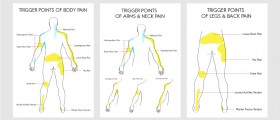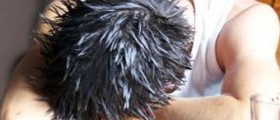
Soft tissue therapy
For those who do not know, fascia is the soft tissue component included in the connective tissue in the human body. It is in charge of providing the much needed protection and support in various different types of structures in the body. There are various types of medical conditions such as a diminished blood flow, muscle tension, painful sensations, inactivity, different sorts of infectious agents, trauma, overuse and psychogenic diseases which may lead to the restriction of the soft tissue. There is a form of soft tissue therapy called myofascial release approach and it is very useful in the treatment of Somatic dysfunction, restriction of motion and the accompanying painful sensations. It was first introduced by Andrew Taylor Still who was a founder of the famous osteopathic medicine. This type of approach utilizes continual palpatory feedback in order to release the myofascial tissues in the body. In order to do so, one needs to stimulate the stretch reflex of the muscles and their overlying fascia, increase the circulation and the lymphatic drainage and relax the contracted muscles. The fascia and the muscles need to be targeted during the myofascial release, but there are other tissues which may get affected by the therapy as well, such as the connective tissue. As the fascia and the muscles get irritated they get exposed to inflammatory conditions which may sometimes become chronic and lead to the development of fibrosis. For those who do not known, fibrosis is the medical term for the thickening of the connective tissue which leads to even more irritation, painful sensations, muscle tension and inflammations. It is actually a positive feedback loop which may lead to the development of ischemia and Somatic dysfunction if left untreated. Myofascial techniques are aimed to break the dreadful cycle.
Myofascial release massage
There are basically two different types of myofascial techniques and those are passive and active. Passive myofascial techniques require the patient to remain completely relaxed while the active techniques require the patient to provide some resistance when necessary. There are different types of direct and indirect techniques which need to be used in both passive and active cases. Direct myofascial release is also sometimes referred to as deep tissue work. It requires the engaging of a certain myofascial tissue restrictive barrier. The tissue needs to be provided with constant force until it finally gets released. Different tools such as elbows and knuckles can be used so that the restricted fascia gets stretched properly. The fascia also needs to be elongated properly and the adhesive tissues need to be mobilized. There is also a technique called structural integration which combines movement education with soft tissue manipulation and it is mainly based on different movement methods, osteopathic manipulation and yoga and its main goal is to balance the body by stretching the skin in certain types of oscillatory patterns. Direct myofascial release technique is rather easy to perform. One needs to land on the body surface with the knuckles or the forearm and simply sink into the soft tissue. Once the first restricted layer is contacted, one needs to put on a line of tension. The fascia then can be engaged by taking up the slack in the tissue. After being engaged, the fascia needs to be moved across the surface, but the touch with the underlying layers should not be lost. Indirect myofascial release is completely different as it only involves gentle stretches and only slight amounts of pressure so that the fascia can unwind all on its own. All the tissues which are characterized as dysfunctional are gently guided along a path characterized by only slight resistance, up to the point where they reach free movement again. These gentle actions are highly beneficial in increasing the blood flow in the affected areas and also in providing heat. The pain gets eliminated and the optimum performance of the body gets retained. This indirect type of myofascial release originates from different types of osteopathy schools and certain principles of physiotherapy. It also relies on certain important principles of the myofascial release. Those principles state that the fascia cannot be separated from the muscles and that it covers all the organs in the human body. When the muscle gets stretched, it is actually myofascial stretching. These types of stretching may affect some other distant parts of the body as well. In the indirect myofascial release technique the fascia first needs to be lightly contacted by using completely relaxed hands. It then needs to be stretched slowly up to the point where a barrier or a restriction can be felt. This barrier needs to be stretched by a light pressure for no longer than 5 minutes. As the barrier slowly gets released, the therapist commonly feels the softening of the tissue, accompanied by the motion and a therapeutic pulse. There are also self myofascial release techniques available to individuals.





-vs-Trigger-Points-(Myofascial-Pain-Syndrome)_f_280x120.jpg)











Your thoughts on this
Loading...